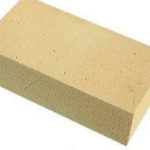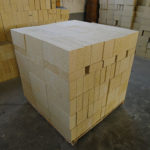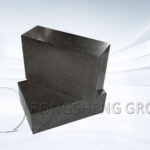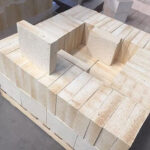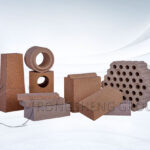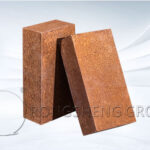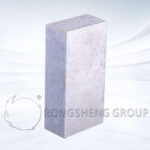The refractory material of the reverberatory furnace for aluminum smelting requires the penetration of molten aluminum and magnesium vapor and has excellent wear resistance and thermal shock resistance. Aluminum smelting reverberatory furnaces are generally built with high-alumina bricks with an AL2O3 content of 80%-85%. Typical aluminum smelting furnaces are lined with refractory materials, usually made of high-alumina refractory materials, Si3N4 combined with SiC refractory materials. Refractory bricks for the lining of aluminum smelting reverberatory furnace-RS refractory brick manufacturers provide high-quality refractory brick products for industrial furnaces, customized refractory brick products, etc.
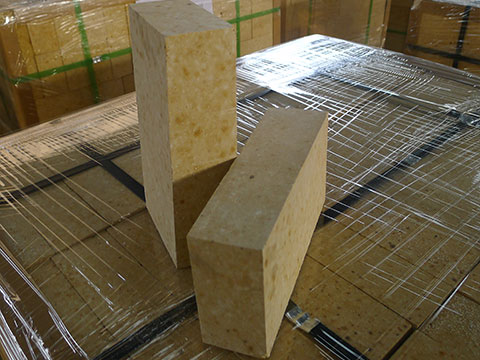
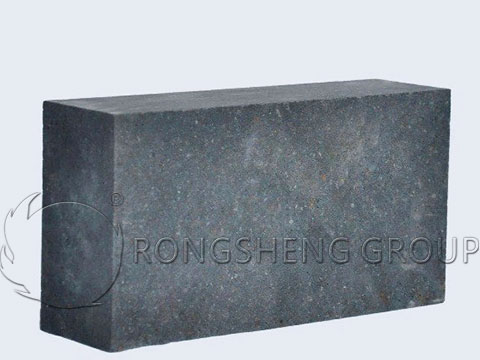
Refractory Bricks for the Inner Lining of Aluminum Smelting Reverberatory Furnace
When using high-alumina refractory materials, the components such as SiO2 and impurities Fe2O3 in the refractory materials will be reduced to Si and Fe, and incorporated into the metal aluminum. Therefore, it is difficult to obtain high-purity metallic aluminum. When using Si3N4 combined with SiC refractories, although impurities can be reduced to melt into metallic aluminum, high-purity metallic aluminum can be obtained. However, since Si3N4 combined with SiC refractories contains Si components, metallic aluminum still has the danger of “picking up” Si from refractories.
Therefore, to manufacture high-purity aluminum, a refractory material that does not introduce impurities is required. According to the chemical principle, among the existing refractory products, the corundum refractory produced with the same metal aluminum raw material – Al2O3 as raw material can meet the above requirements. This corundum refractory material is mainly made of sintered alumina or plate alumina, and an appropriate amount of alumina micro-powder is added. The key to its technology is to use a pure matrix to achieve a self-cleaning structure of alumina to obtain high strength and no impurity components incorporated into metallic aluminum.
In addition, because the temperature of the aluminum plant changes greatly during the aluminum smelting process, the refractory lining of the aluminum smelting furnace should have the characteristics of adapting to rapid temperature changes and good thermal shock resistance. It can be seen that the corundum refractory material is an important refractory material for the production of high-purity aluminum. It will not make the metal aluminum invaded by impurity components but also has high thermal shock resistance.
Commonly used melting and alloying furnaces for primary aluminum ingots and scrap aluminum mainly adopt fixed or inclined gas or fuel-reflective melting furnaces. Lively, it is easy to react with some of the refractory materials, causing damage to the refractory materials.
The reverberatory furnace for aluminum smelting is divided into two types: fixed type and inclined type, generally fueled by gas or heavy oil. The smelting of aluminum is usually made of refractory fiber felt and clay insulation refractory bricks for the non-working layer of the fixed reverberatory furnace. The working layer above the melting pool is made of clay bricks, and can also be hoisted with prefabricated blocks of high-alumina refractory castables or poured on-site, or can be rammed with high-alumina refractory plastics. The working layer of the molten pool is different according to the requirements of use, and the materials of the refractory lining materials used are also different. Generally, high-alumina bricks with an Al2O3 content of 80%-85% are used for masonry, and high-alumina refractory castables with an Al2O3 content other than 80% can also be used for pouring. In order to resist the penetration and erosion of molten aluminum, large silicon carbide bricks are generally used for masonry.
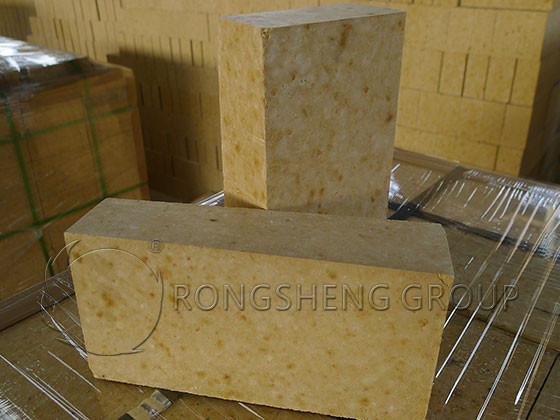
Damage of Refractories in the Aluminum Melting Furnace
(1) Liquid aluminum is easy to penetrate into refractory materials. The alloying elements in aluminum and its alloys have a strong reduction ability to some oxides, and the redox reaction is a strong exothermic reaction. Some alloying elements such as magnesium have a high vapor pressure and are more likely to penetrate into refractory materials than liquid aluminum. Oxidation after penetration into the refractory material will eventually lead to deterioration of the refractory material, loose structure, and damage. Dry anti-seepage material can be used.
(2) During the smelting process of a large aluminum melting furnace, due to the continuous addition of aluminum ingots and alloys, the impact and wear of aluminum ingots and alloy blocks on the furnace mouth are very serious.
(3) The addition of aluminum ingots and alloy blocks, the outflow of aluminum liquid, the fluctuation of furnace temperature, etc., cause thermal shock damage to the refractory lining.
The lining of the aluminum smelting reverberatory furnace in contact with molten aluminum is made of high alumina brick, LZ-80. The alumina content is greater than or equal to 82%, the bulk density is 2.6g/cm3, and the compressive strength at room temperature is greater than 80MPa. The load softening temperature is 1550°C, the refractoriness is >1790°C, and the apparent porosity is 21%.
Why can Silicon Carbide Bricks Completely Replace High Alumina Bricks in Aluminum Melting Furnaces?
Now, the most used refractory material in aluminum melting furnaces is silicon carbide brick. In the past, the main refractory bricks used in aluminum melting furnaces were high alumina bricks. However, as the excellent performance of silicon carbide bricks became known to more users, silicon carbide bricks gradually replaced the use of high alumina bricks in aluminum melting furnaces.
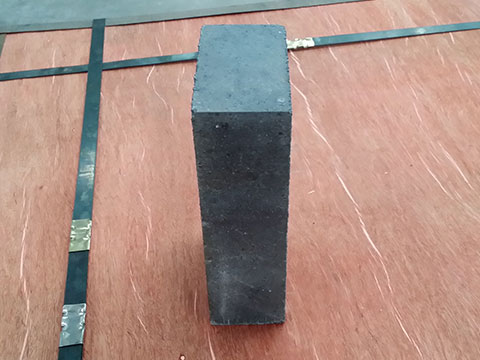
Why are aluminum melting furnaces now switched to silicon carbide bricks?
This has to start with the excellent performance of silicon carbide bricks. Silicon carbide bricks have the largest thermal conductivity among refractory materials, with fast heat transfer speed, excellent erosion resistance, and erosion resistance. High compressive strength and good wear resistance, these advantages are very suitable for the working characteristics of aluminum melting furnaces.
Where are silicon carbide bricks generally used in aluminum melting furnaces? Silicon carbide bricks can be used in the furnace bricks lining, furnace bottom, water outlet, and other parts of aluminum melting furnaces, and can also be used in aluminum water flow tanks, aluminum water holding furnaces, aluminum water ladles, and other parts. The bottom of the aluminum melting furnace is generally paved with silicon carbide standard bricks and silicon carbide straight bricks. The bottom of some small aluminum melting furnaces is made of a whole silicon carbide brick or cast with silicon carbide castables. Aluminum melting furnaces generally have two types of furnaces: rectangular furnaces and circular furnaces. The lining (hearth) of the rectangular aluminum melting furnace is usually built with silicon carbide standard bricks or silicon carbide straight bricks. The lining (hearth) of the circular aluminum melting furnace is made of silicon carbide fan-shaped bricks or knife-shaped silicon carbide bricks.
The water outlet is a very important part of the aluminum melting furnace. The molten aluminum melted in the aluminum melting furnace flows into the launder through the water outlet, and then flows into the holding furnace or directly casts from the launder. Therefore, the outlet part is often very easy to be washed away by aluminum water, and the high-aluminum outlet brick can only be used for 10-20 days on the aluminum melting furnace. Now after using silicon carbide drain bricks, the service life of the drain bricks has been increased to 100-200 days, which is ten times that of the high alumina drain bricks.
Although the price of silicon carbide bricks is much higher than that of high alumina bricks, the service life of silicon carbide bricks in aluminum melting furnaces is 5-8 times longer than that of high alumina bricks. The long service life not only reduces the average cost of refractory materials but also greatly reduces the number of shutdowns for maintenance. As we all know, when the kiln is in continuous operation, the production cost is stable. Once the kiln breaks down, the maintenance of the kiln will increase the production cost. Because the shutdown means the waste of fuel and the investment of labor and equipment, these capital investments are finally included in the production cost of the enterprise. Compared with the aluminum melting furnace using high alumina bricks, the aluminum melting furnace using silicon carbide bricks can save users a lot of money. Therefore, silicon carbide bricks have gradually replaced the use of high alumina bricks in aluminum melting furnaces.
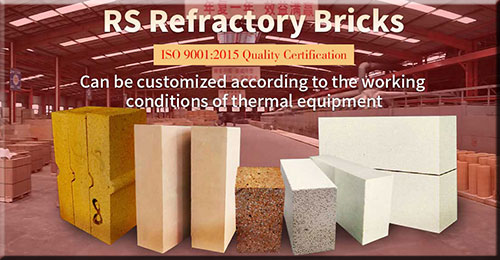
RS Refractory Bricks Manufacturer
RS refractory brick manufacturer is a powerful refractory brick manufacturer. We can provide high-quality high-alumina refractory bricks, silicon carbide bricks, non-stick aluminum refractories, and anti-seepage materials for furnace bottoms for aluminum melting furnaces. We can customize the shape and size of refractory bricks and can customize refractory solutions according to the production needs of specific industrial furnaces. Contact us for free pricing and solutions.

